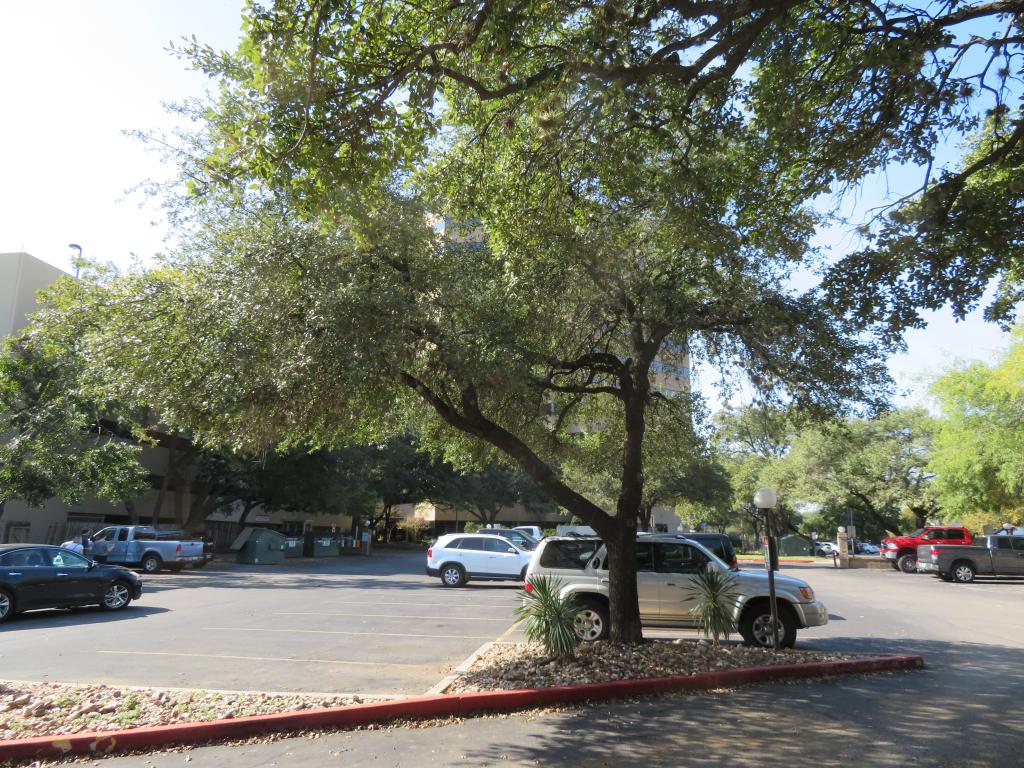Should you Prune Your Trees?
In Austin, we love our trees and want to do what's best for them. If you live somewhere with trees, you may have thought about pruning or trimming them as part of your regular landscape maintenance. Nobody wants their trees to suffer because they neglected to do something important.
Pruning is a common task that people often assume their trees need, but this isn't always the case. In this series of articles, we will explain why trees might need pruning. We will also explain how to prune properly when the time comes so they will continue to grow stronger as they mature, and what to avoid so we won’t make them weaker.
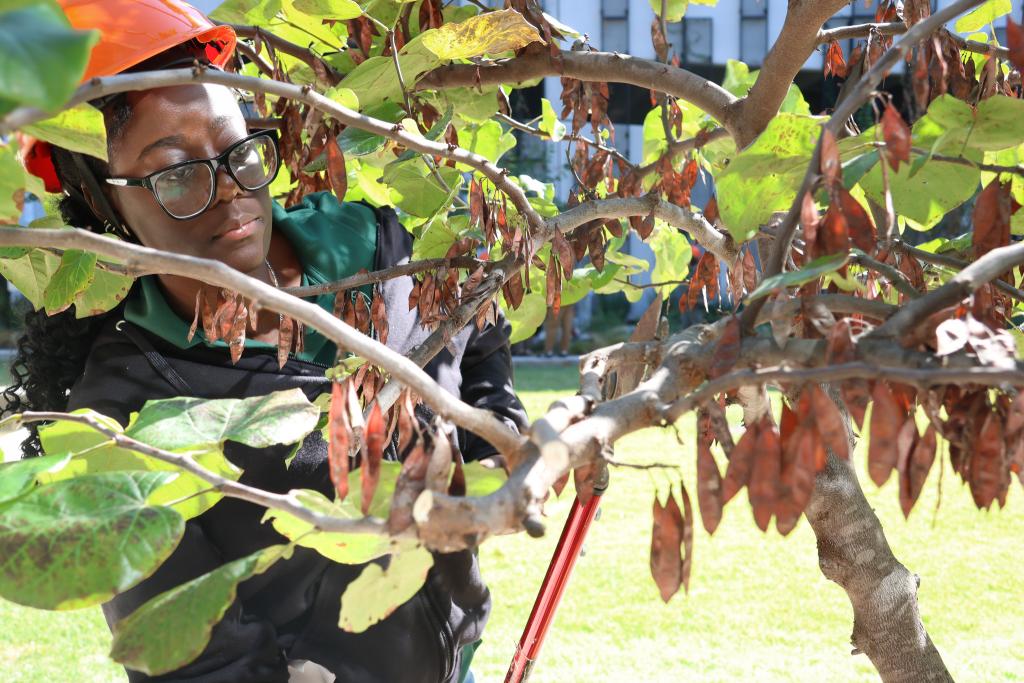
Pruning starts with a close inspection of the tree
What is pruning?
Any time we cut part of a plant off, we are pruning. We may want to reduce the plant's size, thin out competing branches, or remove spent flowers. Different methods of pruning will have different results. We might prune a tomato plant or a boxwood shrub much differently than a tree. This is largely because the potential impacts of pruning trees may be much more significant to safety and longevity.
If we prune plants badly, it might not cause much significant damage. Garden plants often only live one or two seasons; bushes generally don't get large enough to create hazards. The risk is much greater when we prune trees. Their large size means broken trees are much more likely to damage property or injure people, and the results may be around for decades to come. It is more important to avoid major mistakes.
"Pruning is part art and part science. Our goals dictate the methods we use. Science will tell us what the biological responses of the plant will be to our work. An artistic eye will help us make science-based decisions that enhance the beauty of the plant." - City of Austin Forester, Keith Babberney
We can prune with hand clippers, hand saws, or chainsaws. Sometimes we can even pinch out unwanted plant parts with our fingers.
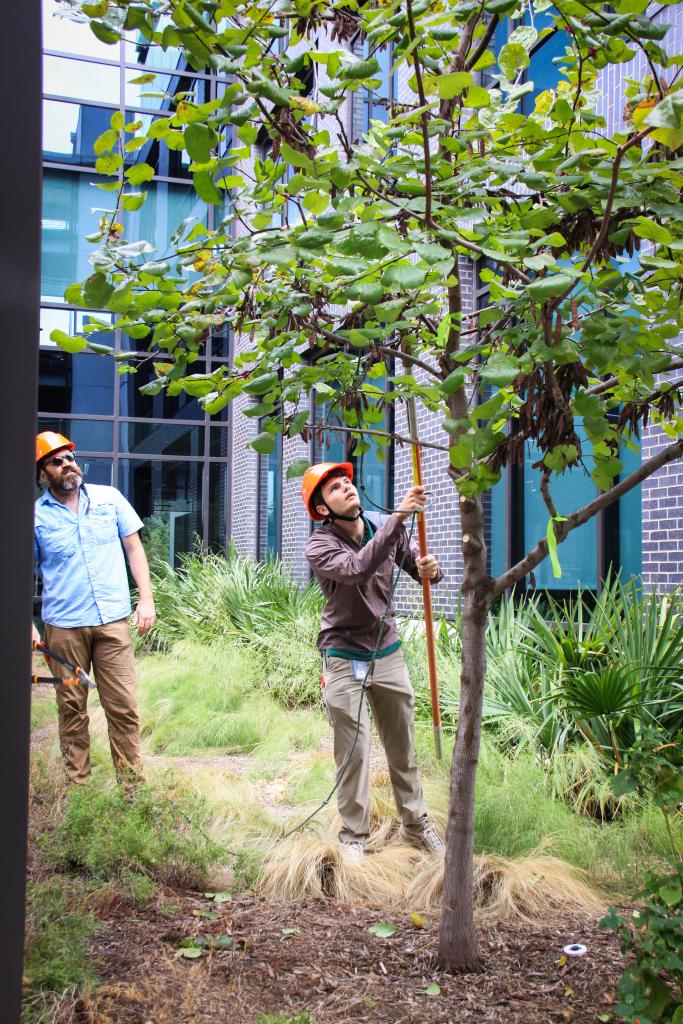
Pruning is just removing part of a plant with any type of tool.
In a forest, trees do fine without any intervention from us, but the particular conditions in city landscapes often create conflicts between trees and people. Most of the time, we prune trees to get branches out of our way and/or make them safer for the people and things underneath them. When done properly, pruning can achieve these goals with minimal risks to trees. At its best, pruning can also develop strong branch structures that will help them withstand strong storms or similar impacts.
Why to prune
Why should you choose to prune a tree? If you can't answer this question, don't break out the cutting tools yet. We should never prune a tree unless we have a clear reason in mind. Start with a careful examination of the whole tree and identify any potential reasons you might need to prune. The most common reasons can be divided into meeting the needs of people, and developing trees with strong structure for the long term.
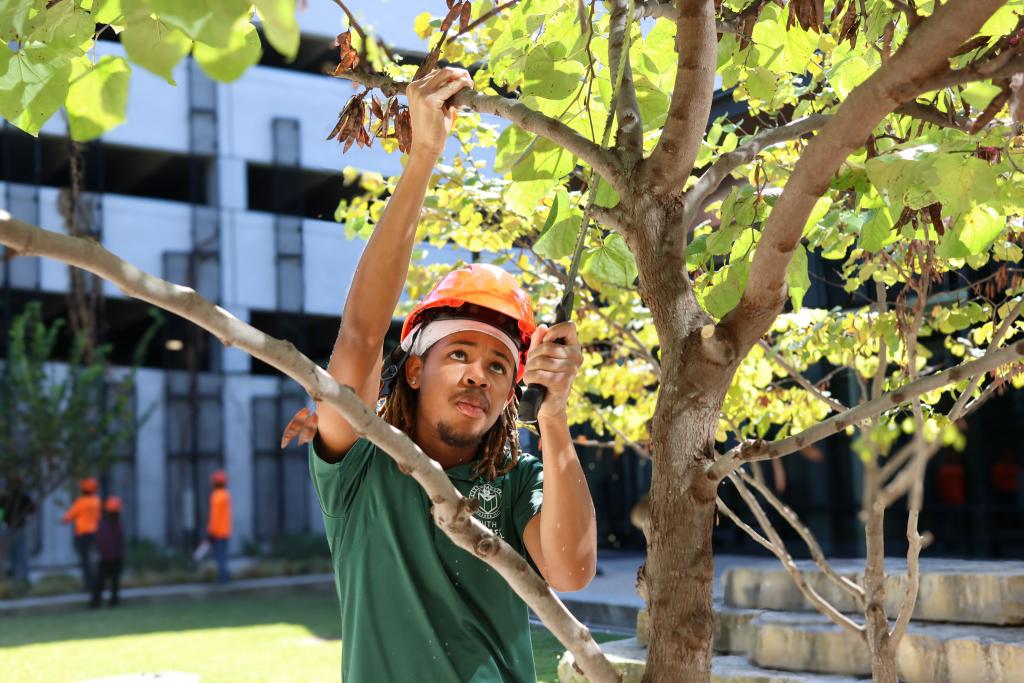
Once a plan is developed, pruning can begin. We should always have a clear reason for removing live branches.
Pruning for people
Trees in a forest do fine without help from people, but in the city they often need some assistance from us to fit in. Conflicts with buildings, traffic, utilities, or other property often dictate when and where we cut branches. Most of the pruning done to landscape trees is to accommodate the needs of people rather than to enhance tree health or strength.
Some common reasons people prune trees include:
- Branches hang too low and interfere with buildings, walkways, roads, or other traffic ways.
- Dead or weak branches might fall and hurt someone.
- A tree blocks a preferred view of scenery or landmarks.
- Managing growth of fruit trees to keep the fruit within reach and prevent excessive loads that could lead to tree breakage.
- Creating a particular ornamental shape or design.
- More light is wanted to grow grass underneath the tree.
Trees in parking lots and other traffic ways often get raised up so they won't damage cars or people.
Pruning for trees
When pruning for people, we often overlook opportunities to improve branch structure. Trees with poor structure are more likely to break as they get older, especially in storms or other intense weather. Any time we decide to prune a tree, we should look for ways to improve its branch structure.
It might sound complicated, but don't be intimidated. At its heart, proper pruning is just reducing or removing problem branches while encouraging stronger branches that grow where we want them. By carefully phasing out weak points, we can develop young saplings into strong, mature trees that will need minimal maintenance (learn more about this in our next blog article). If we create strong structure while trees are young, we won't have to worry about it much when they get large.
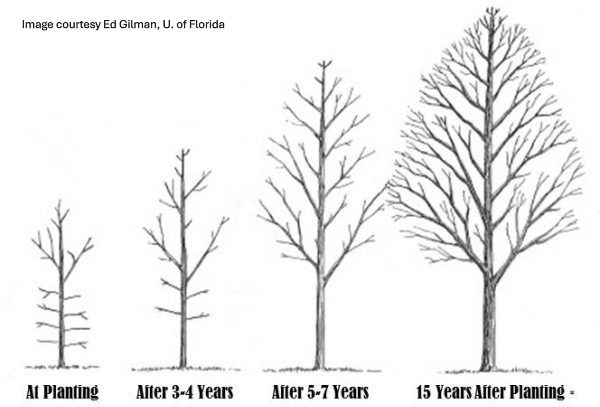
Regular pruning while a tree is young can develop strong structure that will resist breaking in storms.
Develop a plan
If you decide your tree needs to be pruned, first you will need to choose which branches to cut should and where. We will discuss how to make good pruning decisions in the next article. Until then, consider hiring a qualified arborist. An arborist can help you assess the tree and develop a plan. If you decide the job is to big or risky to do yourself, your arborist can bring climbers and/or equipment to do the job safely. Credentials such as ISA Certified Arborist, ASCA Consulting Arborist, or TCIA Accredited can help you narrow your search. If you decide to hire someone to prune your trees, don't be afraid to ask for proof of liability insurance in case of property damage, and references from other customers.
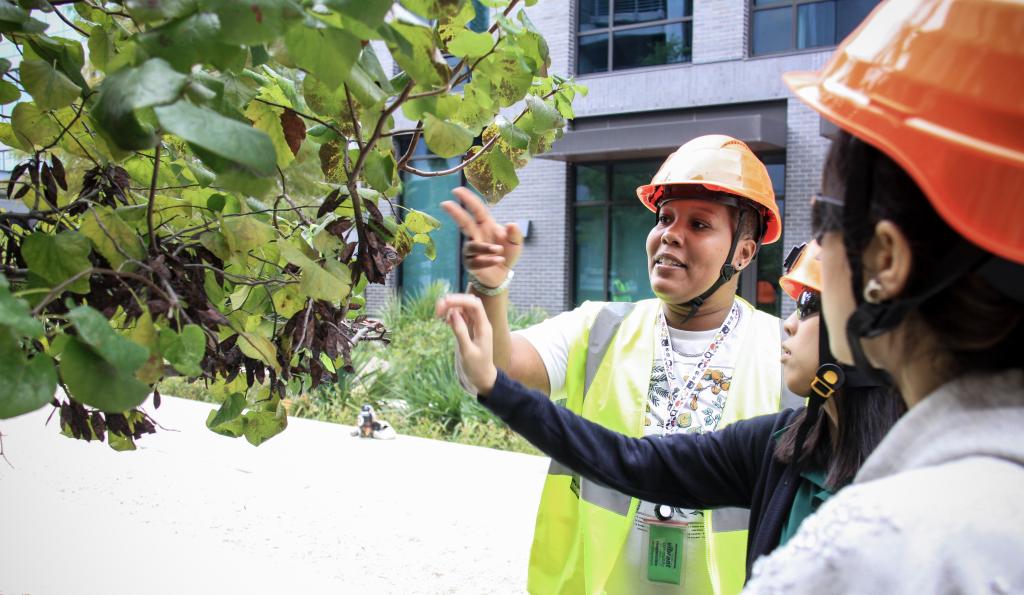
A qualified arborist can guide you in how to prune your tree for improved structure and health, if necessary.
Disclaimer: The information provided in this blog post is for educational purposes only. While we aim to offer helpful guidelines on pruning a mature tree, we strongly recommend hiring a qualified arborist to perform any tree work. Pruning trees can be dangerous if done incorrectly, potentially causing harm to the tree or injury to the individual performing the task.
This information is sponsored by the City of Austin. Learn more about trees and find resources at the Tree Information Center.
Join us on social media @NatureCityATX, where we're cultivating connections!


